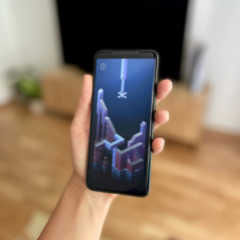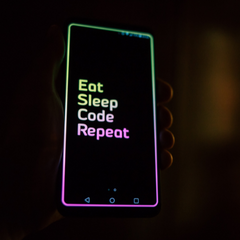“OK, Google…”. “Siri…”. Instructions that make life easier for a relatively large number of people around the world: turn on the TV, play the music they want, open the browser, etc. And we could go on and on. However, there are two major “BUTs” with the most famous virtual assistants from Google and Apple. The first, perhaps not so problematic, is the fact that neither of them works in Czech yet. The second “BUT” is more serious: everything you tell the assistant is shared with its parent company. And what does the company do with the data?
Standa Keppert, like many of us, doesn’t want anyone to know more about him than they need to. So he set about developing his own virtual assistant, Bob.
First, let’s take a look at what Bob should gradually learn and what advantages it will have compared to Siri or Google Assistant. When you finish reading, you can start looking forward to the second article, where Standa will share practical tips on how you can program your own Bob.
I want my own assistant, but where do I start?
The first item on the agenda was a research about which language is the best to program the assistant in, what to look out for, etc. It’s probably no surprise that someone already had a similar idea, which is why there are quite a few tips online to draw from. I took the advice that it’s best to program in Python. Then I made a mind map to clarify what I wanted my Bob to be able to do. I really only wanted a few basic things from him to begin with:
- opening a website;
- starting a program;
- playing music or a movie.
But as I spend more and more time with Bob, my demands on him are growing day by day, so the mind map is getting larger. :)
Anyway, I’ve gotten to the stage where I don’t have to use my keyboard and mouse for some things anymore. All I need is a simple: “Bob, open Chrome.” or “Bob, play Two and a Half Men.” I’ve also taught him to tell me the weather, the main headlines and occasionally entertain me with a joke.
Are you interested in the IT field and looking for job positions and opportunities in the IT industry? Whether you are a programmer, developer, tester, analyst, or software architect, contact us and we will find an IT project tailored to your needs from our IT job offers. Take a look at the current available job positions in the IT field. We will help you find new job challenges and opportunities. We look forward to collaborating with you!
And what about the data mentioned earlier?
The main reason, not only for me, but actually for everyone who programs their own virtual assistants, is the desire not to share more personal data than necessary. I’m sure it’s safer this way. Even if you use ready-made APIs that can help you create an assistant faster. They are provided by Apple, Google, and other large companies. They use algorithms and machine learning to help the assistant record as much information as possible. But you can also rely on the security of your data. The only thing that conditions the use of the API is registration, which generates a unique ID for you. The problem is again the language barrier, as most APIs work only in English, and I haven’t found anything functional for an assistant that works in Czech yet.
The future of Bob. And virtual assistants in general.
Companies have big plans for virtual assistants at large. The primary goal is to continue to make people’s lives easier. They want us to use them on computers, mobile phones, at home and in our cars. This interconnection is crucial for them, because we are back to data sharing, which is something to be reckoned with. Imagine that you tell the assistant what you need to buy and then start seeing ads based on that. Just like when you ask about the price of some electronics, for example.
Imagine, however, that thanks to such a development, one moment you think of a meal to have for dinner and an hour later a delivery service arrives or, even better, a drone flies in with your order. This is certainly a development in the right and interesting direction.
And what about our Bob?
With Bob, I’m still going step by step, but I aim high. :) I plan to add it to my phone, then to my TV and other devices I have. I’ve also started figuring out how to create holograms (for this one, I’m trying to decide if it’ll have a face of Jessica Alba or rather Megan Fox?), which is surprisingly easy to grasp in its own way. The next step will be to build my own robot, which will be interactive and will include another extension of my virtual assistant Bob. Well, I can’t wait to get so far as to create my own “Jarvis” just like the one Tony Stark had in Iron Man. Well, that’s a bit of an exaggeration, of course, but it would be nice.
If you’re also starting to think about your own virtual assistant, stay tuned as we’ll be sharing tips on how to program one soon, including practical code samples.
The virtual assistant is programmed and tips are shared by Standa Keppert.
You can read how to program your own virtual assistant here.
🟡 Are you looking for an interesting project? Check out how we do things here and see which colleagues we're currently looking for.
🟡 Do you have a colleague or friend who is looking for a new project? Join our Referral program and get a financial reward for your recommendation.
🟡 Would you like to start working in IT? Download our ebook START WORKING IN IT: From First Steps to Dream Job, in which we guide you step by step with information, courses, and practical experience that are so essential not only for those who want to switch fields, but also for those who want to advance their careers and further their education.
Or share this article, which may also be useful to your acquaintances.












